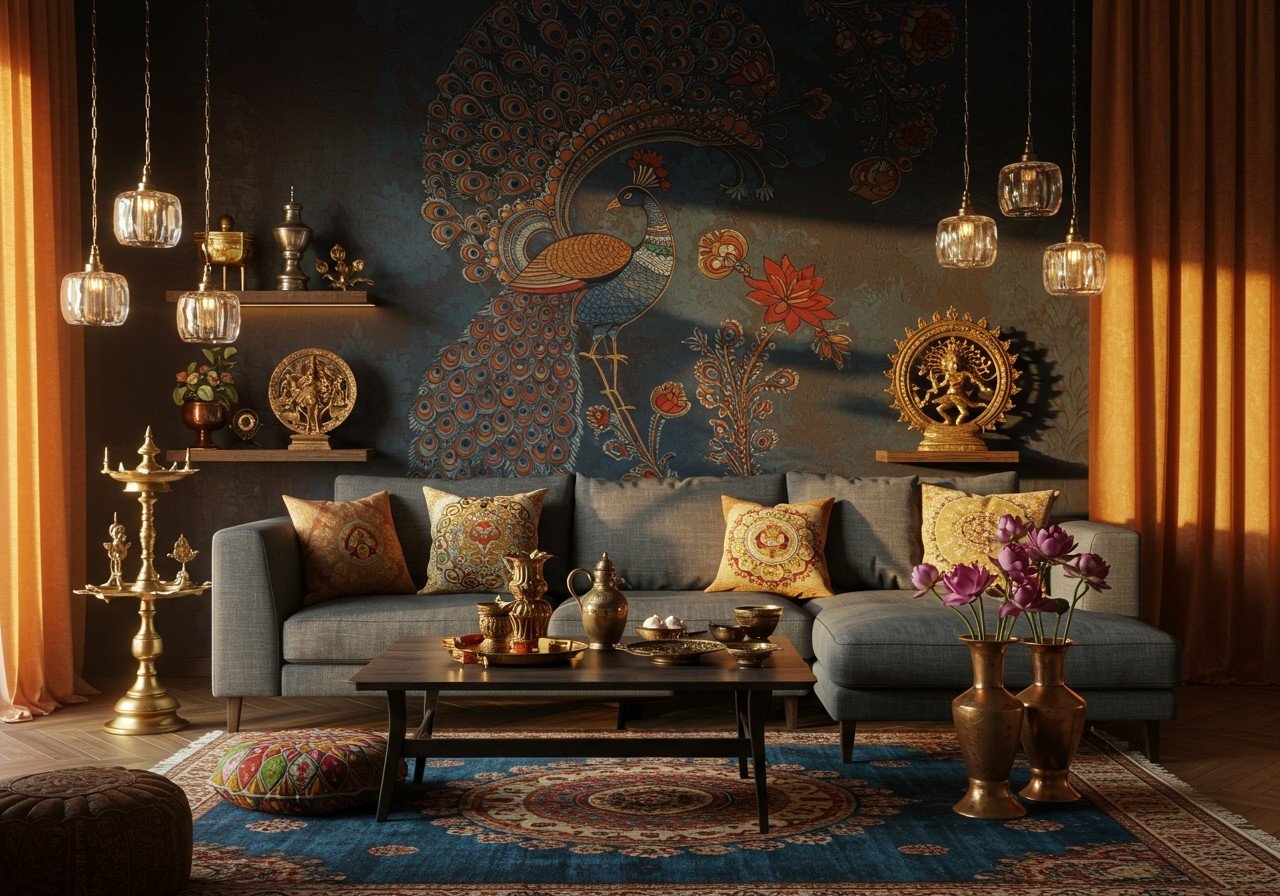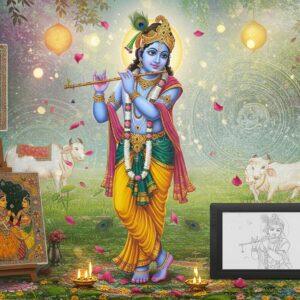
Indian art boasts a rich and diverse history spanning millennia, drawing influences from various regions and cultures within the country. This guide explores how to incorporate Indian art into your home decor, creating a space that reflects tradition, culture, and personal style. Whether you aim to add a touch of elegance to your living room, make a statement with wall art, or cultivate a warm, inviting atmosphere in your dining room, this guide has you covered.
Understanding Indian Art
Before exploring decor ideas, it’s crucial to understand the diverse forms of Indian art. Key styles include Madhubani, Warli, Pattachitra, and Tanjore. These art forms reflect the cultural heritage of different regions in India:
- Madhubani: Known for intricate patterns and vibrant colors, often depicting mythological stories and nature. This style originates from the Mithila region of Bihar and is traditionally created using natural dyes and pigments.
- Warli: Simple yet profound, focusing on everyday life and tribal folklore. Originating from Maharashtra, Warli paintings use basic geometric shapes to depict scenes of human and animal life, festivals, and rituals.
- Pattachitra: Traditional scroll paintings with detailed narratives and natural dyes. This art form from Odisha and West Bengal often portrays mythological stories and religious themes with intricate details and vibrant colors.
- Tanjore: Rich gold leaf detailing and themes from Hindu mythology. These classical South Indian paintings are known for their opulent use of gold leaf, embedded precious stones, and vibrant colors.
Materials like handmade paper and natural dyes are commonly used, showcasing the exquisite craftsmanship involved.
Indian Art for the Living Room
The living room often serves as the centerpiece of the home, and Indian art can add a unique charm:
- Place a large Madhubani painting above the sofa for a captivating focal point. Consider complementing it with traditional floor seating like a Gongadi asan for an authentic touch.
- Use traditional textiles like block-printed cushions and handwoven rugs to add warmth and texture. Explore a variety of patterns and colors to create a vibrant and inviting space.
- Display sculptures and artifacts such as brass idols or terracotta figurines to showcase Indian craftsmanship. Consider adding a brass idol or a handcrafted terracotta piece to your collection.
Indian Art for the Wall
Wall art showcases Indian artistry and adds character:
- Create a gallery wall with smaller artworks like Pattachitra and Warli paintings. Arrange them in a visually appealing manner to add depth and interest to your walls.
- Use Tanjore paintings with rich gold leaf detailing for a touch of opulence and grandeur. These intricate pieces can elevate the aesthetic of any room.
- Hang a framed textile piece like Phulkari or Kantha embroidery for a bold statement piece. These traditional embroideries showcase vibrant colors and intricate patterns.
Indian Art for the Dining Room
The dining room is a space for gathering and sharing meals, and Indian art can create a warm and inviting ambiance:
- Hang a large Pichwai painting depicting scenes from Krishna’s life to set a spiritual tone. Pichwai paintings, with their vibrant colors and intricate details, can add a touch of traditional Indian art to your dining space. Complement this with a brass diya for added ambiance.
- Use a wooden dining table with traditional inlay work or carvings to add elegance and sophistication. Consider incorporating hand-painted ceramic plates and bowls for an artistic touch, creating a visually appealing and culturally rich dining experience.
- Incorporate table runners and placemats with traditional block prints or embroidery to enhance the dining experience. These textiles add a touch of Indian tradition and create a visually appealing tablescape. Consider using Alta for special occasions, adding a traditional touch to your celebrations.
Tips for Styling Indian Art
To maximize the impact of Indian art in your home, consider these styling tips:
- Mix and match different art forms and styles for a harmonious yet eclectic look. Balance traditional pieces with contemporary elements for a unique aesthetic.
- Consider the color palette of your room and choose artworks that complement or contrast effectively. Create a cohesive look by selecting art that harmonizes with your existing decor.
- Use proper lighting to highlight key pieces, such as spotlights or picture lights. Proper lighting enhances the beauty and impact of your Indian art.
Embrace the Beauty of Indian Art at Poojn.in
Poojn.in, India’s leading online store for cultural goods and services, offers a wide selection of authentic Indian art and decor items to enhance your home. From traditional paintings and sculptures to handcrafted textiles and decorative items, you can find everything you need to create a space that reflects your appreciation for Indian culture. Poojn.in also offers a range of products related to Hindu values, rituals, and ceremonies.
Explore our diverse collection of Sindur Dibbis, Alta, and other puja essentials to complete your home decor. For more inspiration on incorporating Indian traditions into your lifestyle, check out our blog posts on Holika Dahan and Rangoli Art.
FAQs on Indian Art in Your Home
How do I incorporate Indian art into a modern home? Blend traditional Indian art with contemporary furniture and decor. Use art pieces as statement items in minimalist settings for a striking contrast.
What are some popular online stores for Indian home decor in the USA? Several online stores specialize in Indian home decor. Taajoo focuses on traditional handicrafts, LoveNspire offers a wide range of decorative items, and India Circus provides affordable and stylish options. You can also find stores specializing in luxurious textiles made from Indian wedding sari fabrics.
What materials are commonly used in Indian art? Indian art utilizes natural materials like cotton, silk, wood, and metal. Paintings may incorporate natural dyes and pigments, while sculptures and decor items are often crafted from brass, terracotta, or stone.


